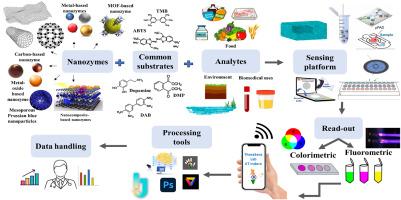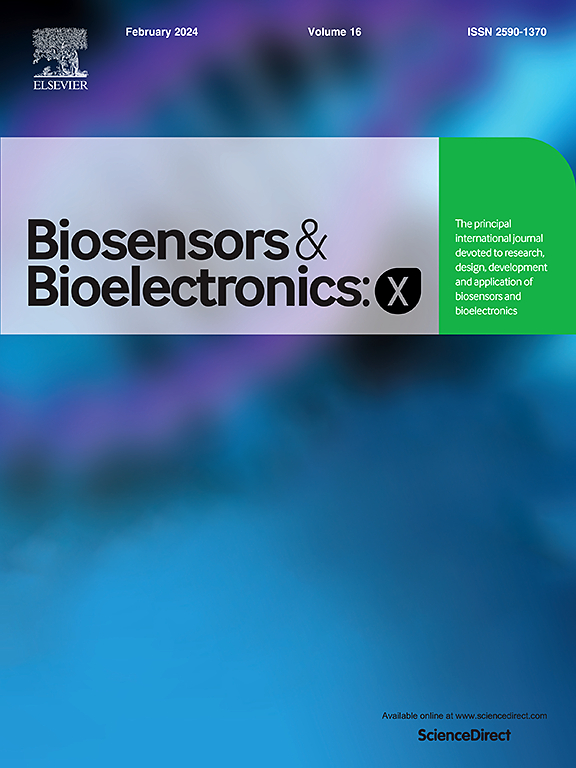Smartphone-enhanced nanozyme sensors: Colorimetric and fluorescence sensing techniques
IF 10.61
Q3 Biochemistry, Genetics and Molecular Biology
引用次数: 0
Abstract
The advent of smartphone technology has changed the biosensing field, especially by integrating nanozyme-based colorimetric, fluorescence sensing strategy. This review article describes the development of smartphone-assisted nanozyme sensor technology, harboring increased sensitivity and specificity for detecting relevant markers. While mimicking natural catalytic enzymes, nanozymes show exceptional performance in a variety of analytical applications. Combining the computing power and imaging capabilities of smartphones, nanozyme based sensors offer a low-cost, user-friendly, and scalable solution for point-of-care technology. We have discussed the principles behind colorimetric and fluorescence sensing techniques, the role of nanozymes in these processes, and the methodologies for leveraging smartphone technology for data acquisition and analysis. Crucial applications in medical diagnostics, environmental monitoring, and food safety are reviewed, with a focus on recent innovations and forthcoming prospects. The convergence of nanozyme sensors and smartphone technology promises to democratize access to advanced colorimetric or fluorometric based biosensing.

智能手机增强型纳米酶传感器:比色和荧光传感技术
智能手机技术的出现改变了生物传感领域,特别是通过整合基于纳米酶的比色、荧光传感策略。这篇综述文章介绍了智能手机辅助纳米酶传感器技术的发展,该技术提高了检测相关标记物的灵敏度和特异性。在模仿天然催化酶的同时,纳米酶在各种分析应用中表现出卓越的性能。结合智能手机的计算能力和成像能力,基于纳米酶的传感器为护理点技术提供了一种低成本、用户友好和可扩展的解决方案。我们讨论了比色和荧光传感技术背后的原理、纳米酶在这些过程中的作用,以及利用智能手机技术进行数据采集和分析的方法。我们回顾了在医疗诊断、环境监测和食品安全方面的重要应用,重点介绍了近期的创新和即将到来的前景。纳米酶传感器和智能手机技术的融合有望使先进的比色法或荧光法生物传感技术平民化。
本文章由计算机程序翻译,如有差异,请以英文原文为准。
求助全文
约1分钟内获得全文
求助全文
来源期刊

Biosensors and Bioelectronics: X
Biochemistry, Genetics and Molecular Biology-Biophysics
CiteScore
4.60
自引率
0.00%
发文量
166
审稿时长
54 days
期刊介绍:
Biosensors and Bioelectronics: X, an open-access companion journal of Biosensors and Bioelectronics, boasts a 2020 Impact Factor of 10.61 (Journal Citation Reports, Clarivate Analytics 2021). Offering authors the opportunity to share their innovative work freely and globally, Biosensors and Bioelectronics: X aims to be a timely and permanent source of information. The journal publishes original research papers, review articles, communications, editorial highlights, perspectives, opinions, and commentaries at the intersection of technological advancements and high-impact applications. Manuscripts submitted to Biosensors and Bioelectronics: X are assessed based on originality and innovation in technology development or applications, aligning with the journal's goal to cater to a broad audience interested in this dynamic field.
 求助内容:
求助内容: 应助结果提醒方式:
应助结果提醒方式:


